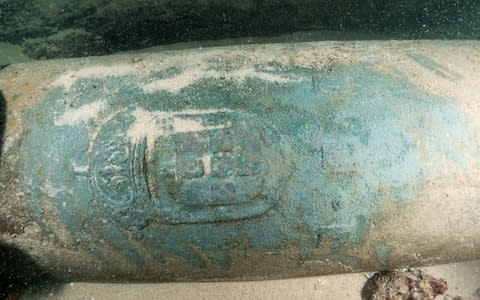Wreck of 400-year-old spice trade ship found off coast of Portugal in 'discovery of a decade'

A 400-year-old merchant ship laden with bronze cannons and cowrie shells, which were used as currency in the African slave trade, has been discovered on the seabed off the coast of Portugal.
Archaeologists believe the ship was returning from India on the spice route when it was wrecked off the town of Cascais, west of the capital, Lisbon.
Divers found Chinese ceramics, cowrie shells, bronze cannons engraved with the Portuguese coat of arms and even the remains of spices such as pepper in and around the wreck.
Finding the ship, which is thought to have sunk between 1575 and 1625, is of great significance, said Jorge Freire, the scientific director of the archaeological project.
“From a heritage perspective, this is the discovery of the decade,” he told Reuters. “In Portugal, this is the most important find of all time.”

Finding such wrecks off the Portuguese coast is rare – the last similar discovery was in 1994, when the remains of a ship called Our Lady of the Martyrs was located off the Fort of Sao Juliao da Barra near Cascais.
The number and variety of artefacts found this time around are also significant.
The objects are “very well preserved”, Mr Freire said.
The wreck was found earlier this month as a result of a collaboration between the Portuguese navy, Nova University in Lisbon and the municipal council of Cascais.
The wreck lay just 40ft below the surface.
Some artefacts have been removed from the site and will be studied by scholars in an effort to find out the name of the ship and where it had sailed from.

Underwater archaeology will be complemented by research in Portugal’s extensive archives which document the golden age of the country’s exploration and trading activities.
“For a long time, specialists have considered the mouth of the Tagus river a hotspot for shipwrecks,” said Luis Mendes, the culture minister. “This discovery came to prove it.”
Portugal’s trade routes with Asia were pioneered by Vasco da Gama, who became the first person to sail directly from Europe to India.
Setting out in 1497, he sailed down the west coast of Africa, rounded the Cape, sailed up the east coast of Africa and then reached Calicut in India.
On a second voyage, da Gama established trading posts along the coast of what is now Mozambique.


